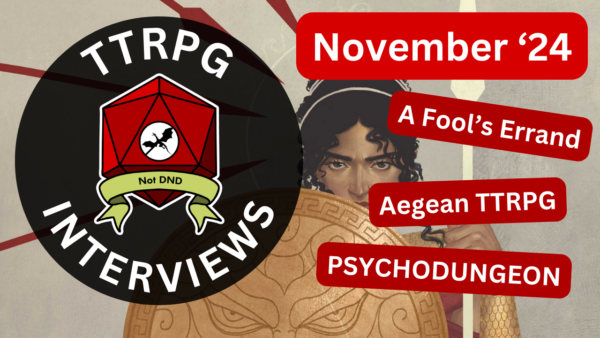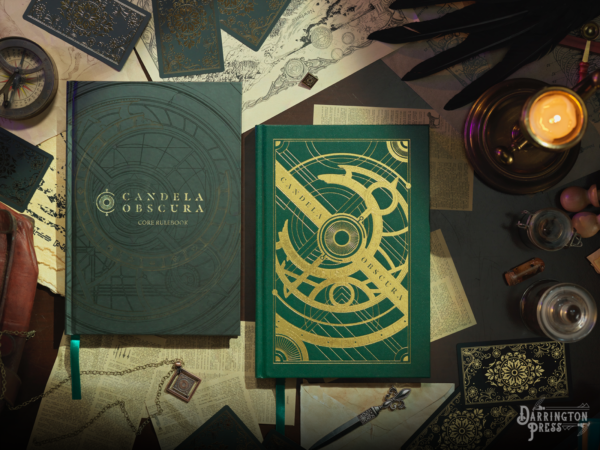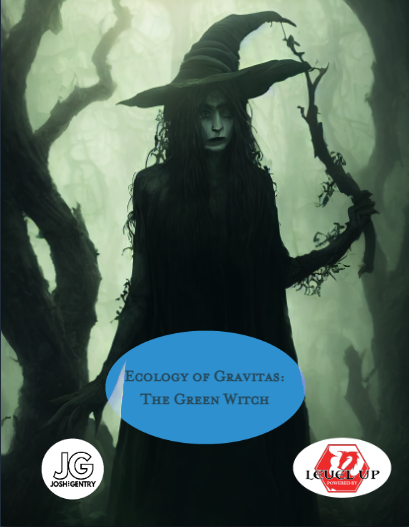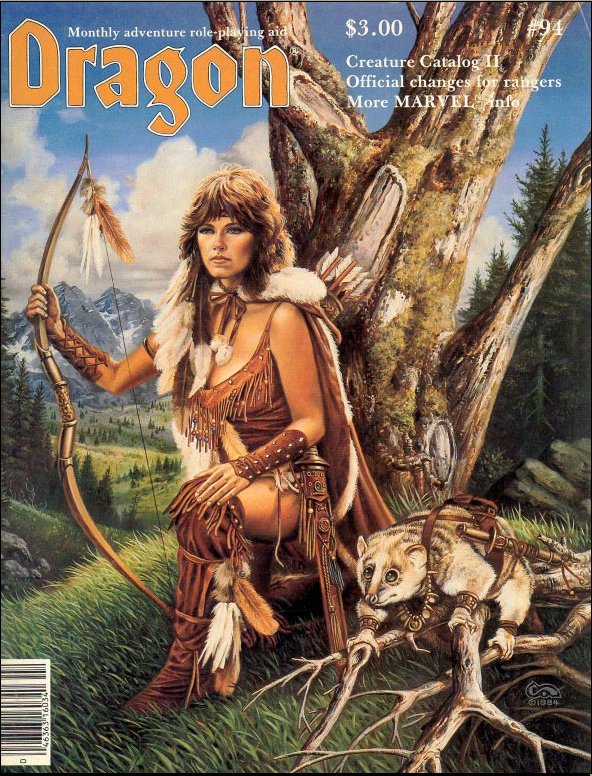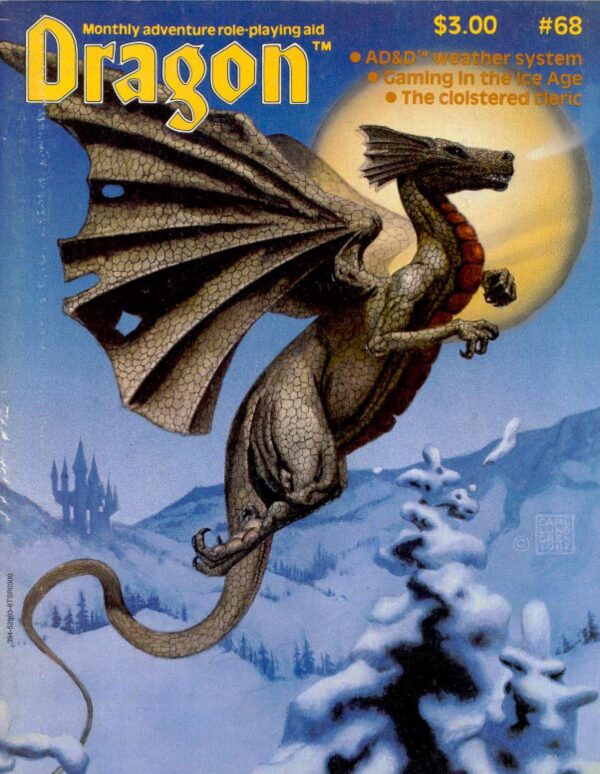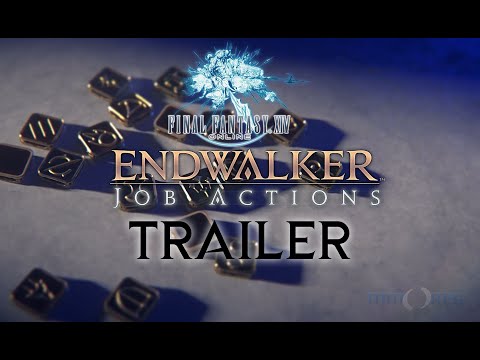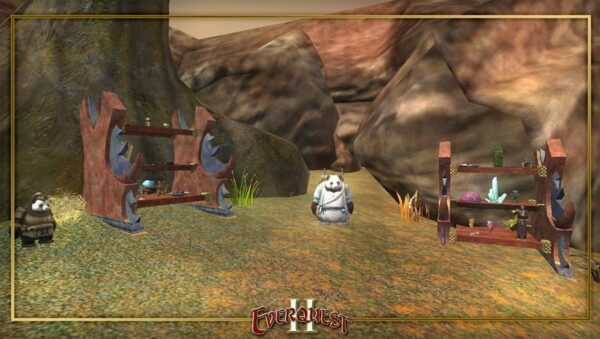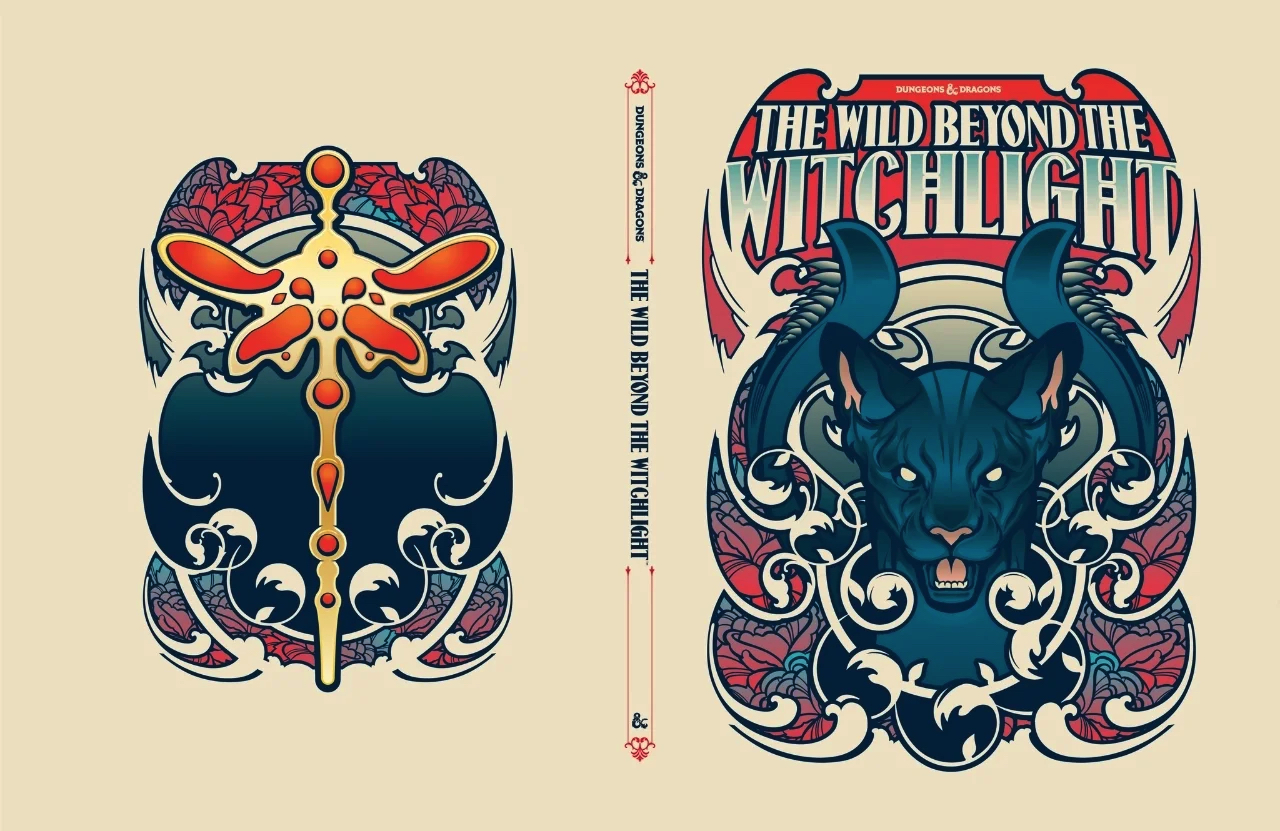
The Wild Beyond the Witchlight isn’t just Wizards of the Coast’s latest Dungeons & Dragons adventure. It’s the first official, full-length adventure from WotC set in the Feywild. While often mentioned, the counterpart to the Shadowfell has gotten much less attention through the editions.

Domans of Delight
Ravenloft/Barovia, Falkovnia, etc. have been around for years as have their Darklords Strahd, Ankhtepot, etc. with various modules and adventures showcasing them. It’s with TWBtW that we learn that the Feywild has Domains of Delight as a counterpoint to the Domains of Dread, and each is ruled by an archfey. The Feywild is chaotic because its archfey rulers are mercurial whereas the Domains of Dread tend to be repetitive as part of their tragedy, such as Strahd pursuing reincarnations of Tatyana.
While the Monster Manual has some fey creatures, like sprites and pixies, 5E hasn’t had many options for more powerful fey creatures. I had to turn to Tome of Beasts I&II and Creature Codex from Kobold Press for my own campaign before this. Because it’s an adventure, not a setting book or creature compendium, TWBtW doesn’t completely solve this issue, but hopefully it will lead to other books that do.
Speaking of which, one appendix has 18 creature stat blocks. Stat blocks for specific NPCs are scattered throughout the book for a total of 46 stat blocks overall. One of those is for a generic Witchlight Hand, a.k.a. a worker at the carnival. Witchlight Hand is also a new background option for players, but more on that in a minute.
The tone for the last several D&D books has been rather dark if you consider Baldur’s Gate: Descent Into Avernus, Icewind Dale: Rime of the Frostmaiden, Van Richten’s Guide to Ravenloft, etc. By contrast, TWBtW is colorful and whimsical, though still dangerous and, in places, containing an undercurrent of dread, which makes sense since the Feywild and Shadowfell are opposite sides of the same planar coin.
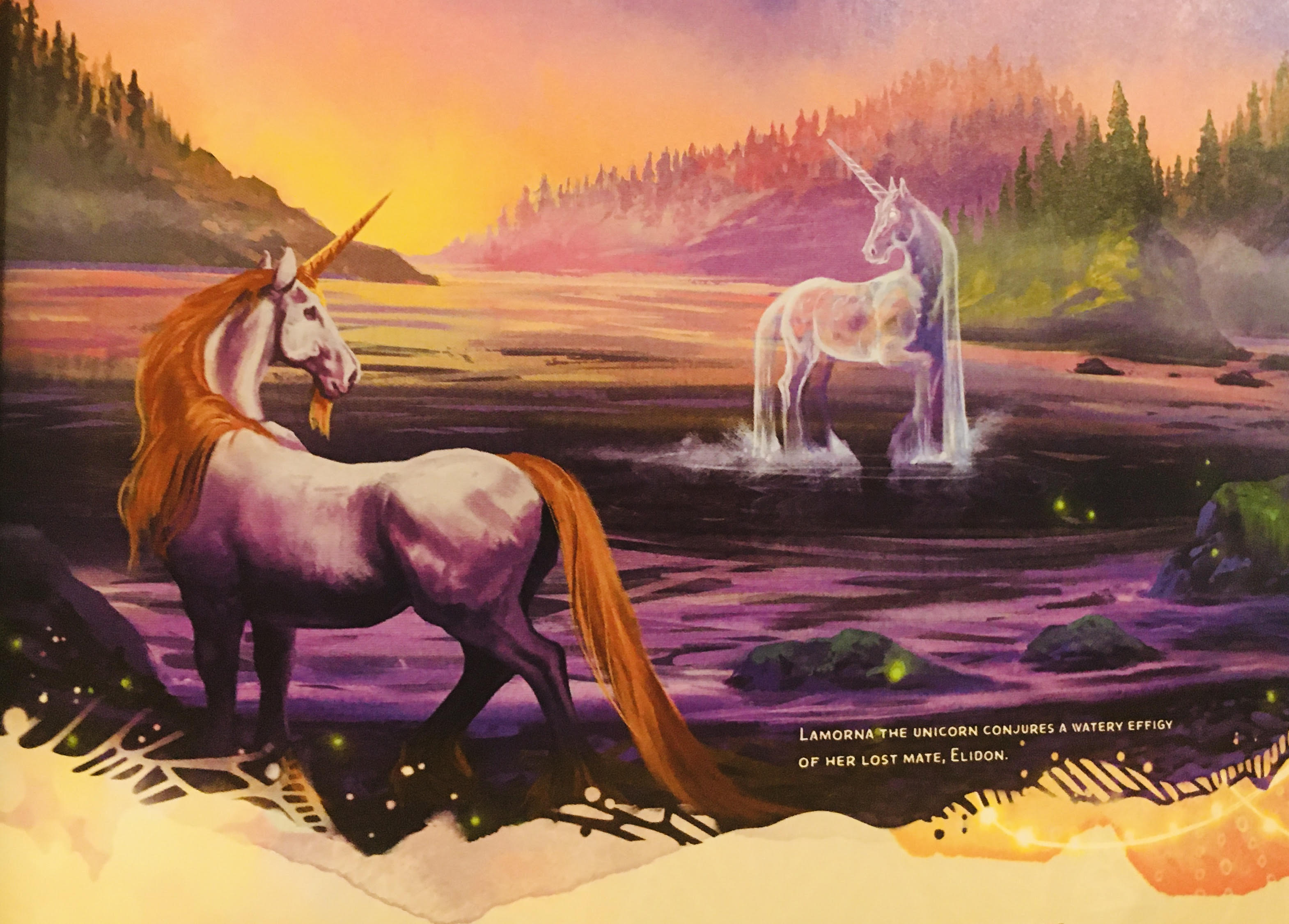
Focus on the Feywild
The challenge in presenting the Feywild is how to distinguish it from the typical D&D setting. After all, the difference between our world and fairy tales is the presence of magic, but magic and wonders are part of traditional D&D realms. So how do they create that tone? By turning everything up to 11, so to speak.
As presented in TWBtW the Feywild is a place of heightened emotion, which also affects the environment. If you’re upset enough, the rock you’re sitting on while crying might cry itself. Happy? Those flower buds near you might bloom early or even start singing. The emotions of archfey have even greater reach and effects, creating or felling mountains and literally changing their environment to match their mood.
TWBtW includes elements of various types of fairy tales and fey adventure. Some NPCs are sweet and so adorable you can’t help falling in love with them. Other parts of TWBtW have the darker elements of the original Brothers Grimm tales or the sadder aspects that can even slip into Disney versions of those same stories. Ray Bradbury’s Something Wicked This Way Comes is clearly an influence on the Witchlight Carnival. The book also tries to evoke feelings of stepping into a different world a la Alice in Wonderland or The Wonderful Wizard of Oz.
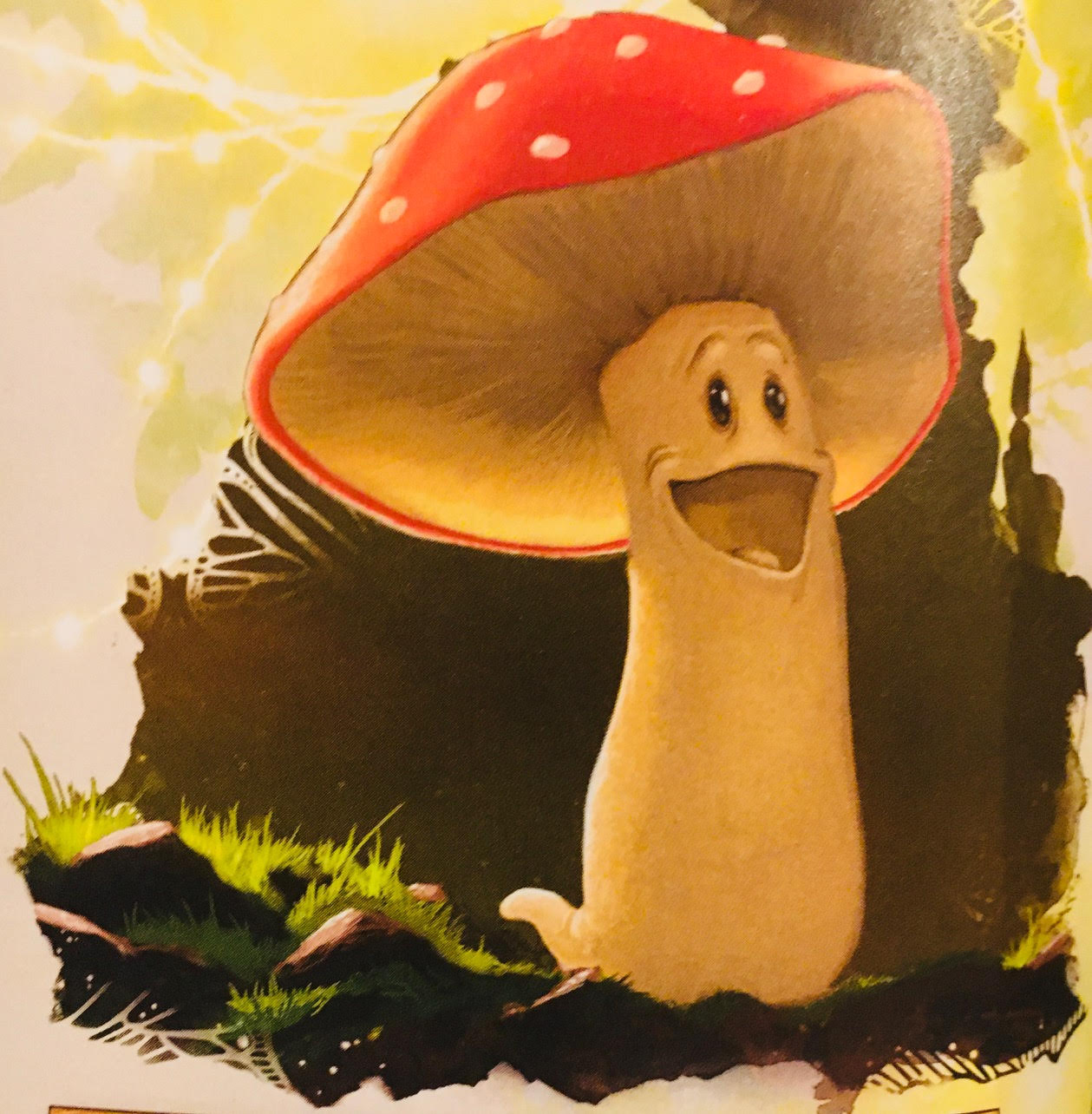
Art & Design
TWBtW is just beautiful. I’ve been a fan of Kate Irwin’s art direction on the 5E books with only a few quibbles, such as when the occasional book had an inconsistent style or used pieces of art jarringly different and discordant from the rest.
The overall style feels cohesive even when individual pieces may vary, from lush to simple yet fanciful, from darkly adventurous to cute and cheery. It’s almost impossible to look at Claudio Pozas’ Campestri artwork and not want to smile at the singing mushroom. The graphic design of the book by Trish Yochum has flourishes like the pretty corner designs that are appropriate for a fairy tale adventure.
The maps by Stacy Allan and Will Doyle are gorgeous and all full color. The pullout map in the back has the two overall settings for the adventure—the Domain of Delight Prismeer on one side and the map of the Witchlight Carnival on the other. Only a few of the interior maps have grids because the Feywild is changeable. Such maps are evocative of the area rather than being pinpoint precise and reinforce the tone.
The wide release cover by Tyler Jacobson plays with the darkness and light of fey adventures, setting the tone of the story within very well. I initially had mixed emotions about the limited edition game store cover. I adored Hydro74’s prior work on Xanathar’s Guide to Everything and Mordenkainen’s Tome of Foes and the displacer kitty is adorable. The color choices of the metallic ink, soft touch cover rubbed me wrong initially and felt too stark. It’s been growing on me.
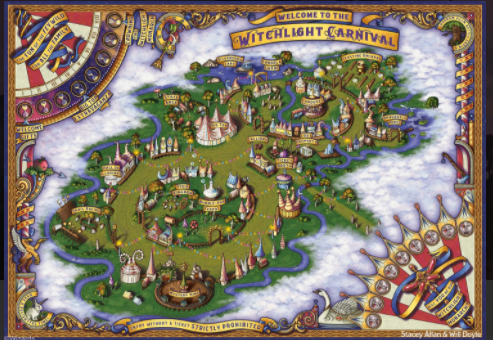
The Practical Side of a Feywild Book
TWBtW contains more information than I expected for new players and especially new DMs. So instead of just plunking down new races, it gives a brief explanation of the components to the race listing. DMs are given advice on running a game and, importantly, how to handle making a mistake. It’s a smart move since the setting is one that might attract new players and DMs to D&D. I’d like to see this continue because really, any adventure could be anyone’s first adventure or first to DM.
Milestone achievement is used, which also makes things easier for a new DM. TWBtW says it’s an adventure for characters level 1-8. If I’m calculating the milestones properly it seems they don’t actually hit 8th until the end of the adventure.
Including a story tree and pronunciation guide seems to be standard now, which I heartily endorse. I hope the 32 role-playing cards included to help the DM keep track of NPCs becomes standard next.
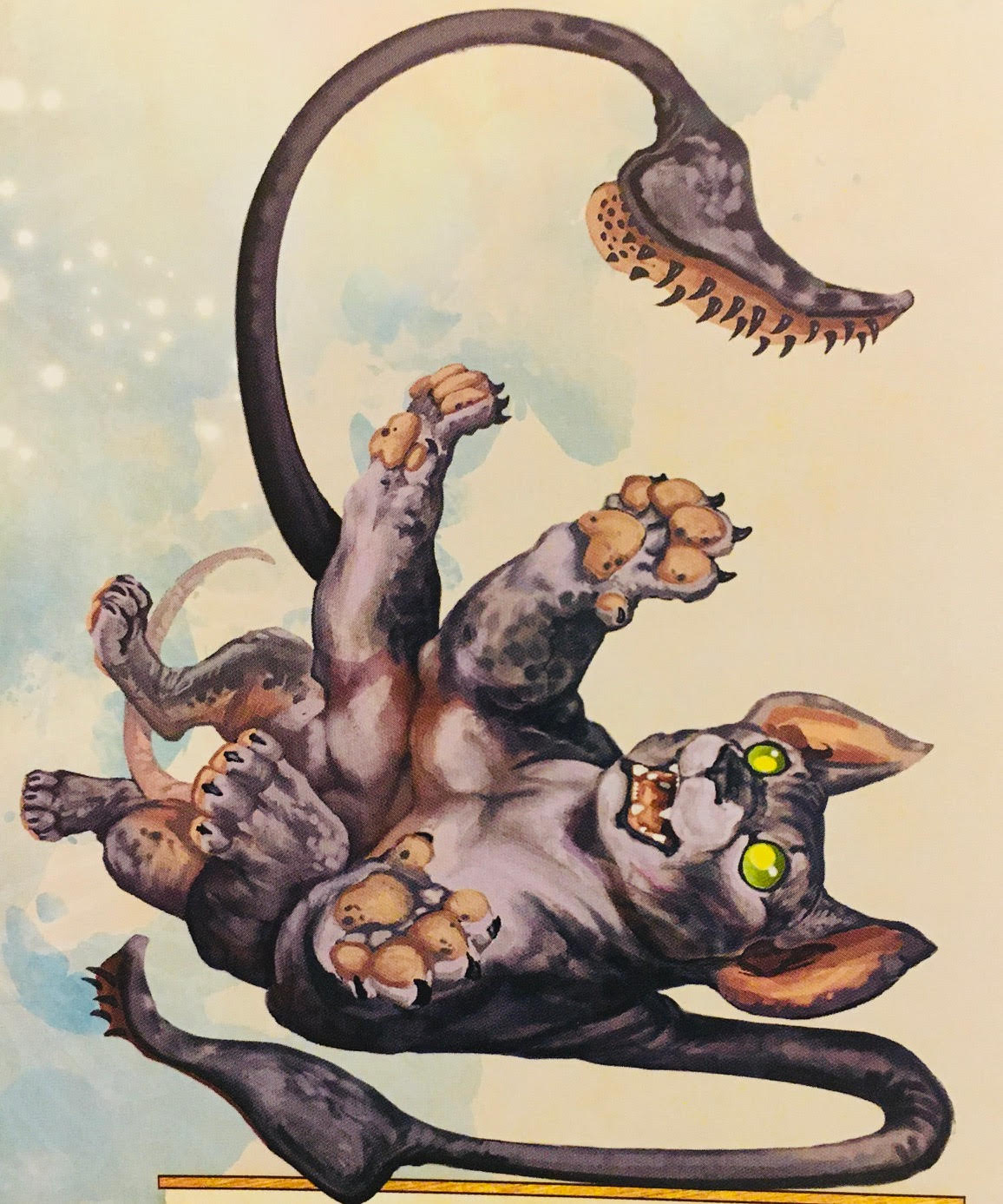
Potential Spoilers & Player Options
That’s all I can say without a spoiler warning in this review—and I’m more generous than WotC was. TWBtW gives its spoiler warning in the second paragraph of the first page, so the entire book has a spoiler warning. I’m not sure I agree, but in accordance with WotC’s caution, only read on if you’re a DM or not planning to play TWBtW [EDITOR’S NOTE: We’re not using the spoiler tag here but we do use it further down].
The Witchlight carnival pops up in an area every eight years, which makes it simple to drop a day of fey carnival adventure into your regular campaign. DMs have a choice of two adventure hooks to entice players to seek out the feywild crossing hidden within the carnival, travel to Prismeer, and solve a mystery. One new player background is directly tied to one adventure hook.
The Feylost background is for people who partially grew up in the Feywild. Whether they wandered there by accident, were kidnapped by a fey creature, or rescued from something dire by a kindly fairy, you spent a period of your childhood there before finding your way back, and it changed you. Characters who take the Feylost background have a fey mark, which is akin to the signs that a person is a tiefling. The Feylost also have a fey visitor when they’re tired or sleeping. Both traits get random tables to provide inspiration.
Because of their time in the Feywild, the Feylost get the feature Feywild Connection. Their time there gives them mannerisms that fey creatures recognize. That could cause them to be favorably reviewed by some fey creatures and maybe even receive aid on occasions.
The other new background, Witchlight Hand, is for characters who have been working at the Witchlight Carnival as they travel the world and planes. During their time they’ve earned the friendship of a Witchlight Carnival Companion, with a random table for inspiration.
While WotC previewed four new Feywild races earlier this year only two made them into the book. I hope we see Owlfolk in a future Feywild product.
Here the Rabbitfolk are named the Harengon. Tall, bipedal animal humanoids, the Harengon were originally developed for NPCs, but the concept art by Shawn Wood was so good WotC’s play testers demanded the option to play one. Most of the UA abilities stay the same, like the Lucky Footwork benefit that allows the addition of a rolled d4 reaction to a failed Dexterity save and the Hare Trigger, which allows a Harengon to add their Proficiency Bonus to their Initiative Roll.
However, the Rabbit Hop ability improved in my opinion. Now a Harengon can hop a distance of five times its Proficiency bonus without provoking an attack, and it can do this its Proficiency Bonus number of times until it takes a long rest.
Pixies were a race option in 4E. TWBtW instead provides the race option Fairy, which has the creature size Small instead of the Tiny size Pixies had. The flight ability changes from the UA version to not being available if they’re wearing medium or heavy armor. The flight speed matches the Fairy’s walking speed.
The Fairy is also designed to be a bit more visually customizable so instead of being limited insect wings your Fairy could have bat wings, as an example. Regardless, at 5th level it had the ability to cast enlarge/reduce so it can change its size (or other people’s) as happens in many fairy tales.
Even if you choose to play a Fairy or Harengon, your character is supposed to be one that lives in the Material Plane, not the Feywild, because Chris Perkins and his team want players to see the adventure through fresh eyes instead of playing someone who is experienced in the Feywild. Your family came from the Feywild, but you are new to it.
That might seem to contradict the new backgrounds, but it doesn’t actually. Your time in the Feywild is supposed to feel like a dream for the Feylost, who are losing their memories of that time but not the feelings created. As for the Witchlight Hand background, the carnival travels all over, including to other planes. While the carnival gives your character a taste of Feywild, nothing demands that the carnival actually visited the Feywild during your tenure.

Feywild Adventure, Here and There
The adventure begins when the Witchlight Carnival arrives at your campaign location. This early part of the adventure is a bit like the early training segments in video games—it’s there to help characters to acclimate to the adventures in the Feywild. It gives players a chance to try out various games and experiences, with challenges tied to each character stat.
During this phase DMs are given a time tracker and mood tracker. The former is to help manage the pace, but DMs are also advised to be flexible if the players are having fun in this segment and allow it to run longer than the in-game eight hours designated for it.
The mood tracker determines how the carnival feels and behaves. When the players are having fun and interacting positively with the carnival folk, the tone is light and everything is colorful. If players are rude to the employees, refuse to engage, etc. everything becomes darker and takes on a sinister tone.
Only Mr. Witch and Mr. Light prefer their new carnival and don’t want to swap back. So they’re hoping to avoid the other carnival. They also know far more about what is going on in Prismeer than they want to admit out of fear they could be forced back to their old carnival in retribution.
The first adventure hook to entice players to seek out the Feywild crossing within the carnival is tied to one or more characters having the Feylost background. In this situation the characters lost something in the Feywild.
A session zero is strongly recommended by the game designers for TWBtW and if you choose the Lost Things adventure hook the campaign would be hurt if you don’t. Besides creating possible connections between the characters, the DM needs to work out with the players what was lost, and the DM then needs to place it in Prismeer and how it can be found. Tasha’s Cauldron of Everything explained what a session zero was and how to use it. Additionally, Van Richten’s Guide to Everything had additional information on running a session zero that might be useful.
In the other adventure hook, Warlock’s Quest, an old warlock (Madryck Roslof,) has lost contact with his patron (archfey Zybilna, ruler of Prismeer, one of the Feywild’s Domains of Delight). He begs the characters to find out what happened to Zybilna and help her if necessary.
Whichever option you choose, the players must find the Feywild crossing and go to Prismeer. The land, however, is no longer what it was. Zybilna has been frozen in time along with her court and her place has been usurped by Bavlorna, Skabatha and Endelyn, the hags of the Hourglass Coven. These daughters of Baba Yaga have divided Prismeer into three kingdoms, Hither, Thither, and Yon, respectively, and transformed the terrain to their taste.
As the name of the coven and kingdoms indicates, time is a factor to the hags’ powers and in this adventure, but thankfully the adventure itself isn’t timed so characters can explore as they see fit. A story tracker is included to help the DM more easily monitor certain story aspects and locations of significant items, like a unicorn horn that could be a component in breaking the spell that traps Zybilna.
Before starting TWBtW overall and the Prismeer segments in particular the DM should review the three rules that bring some order to Feywild—the Rules of Hospitality, Ownership and Reciprocity. Some fey might be helpful and not follow a strict version of the rules because they recognize you’re an outsider. Others will grant no exception for ignorance.
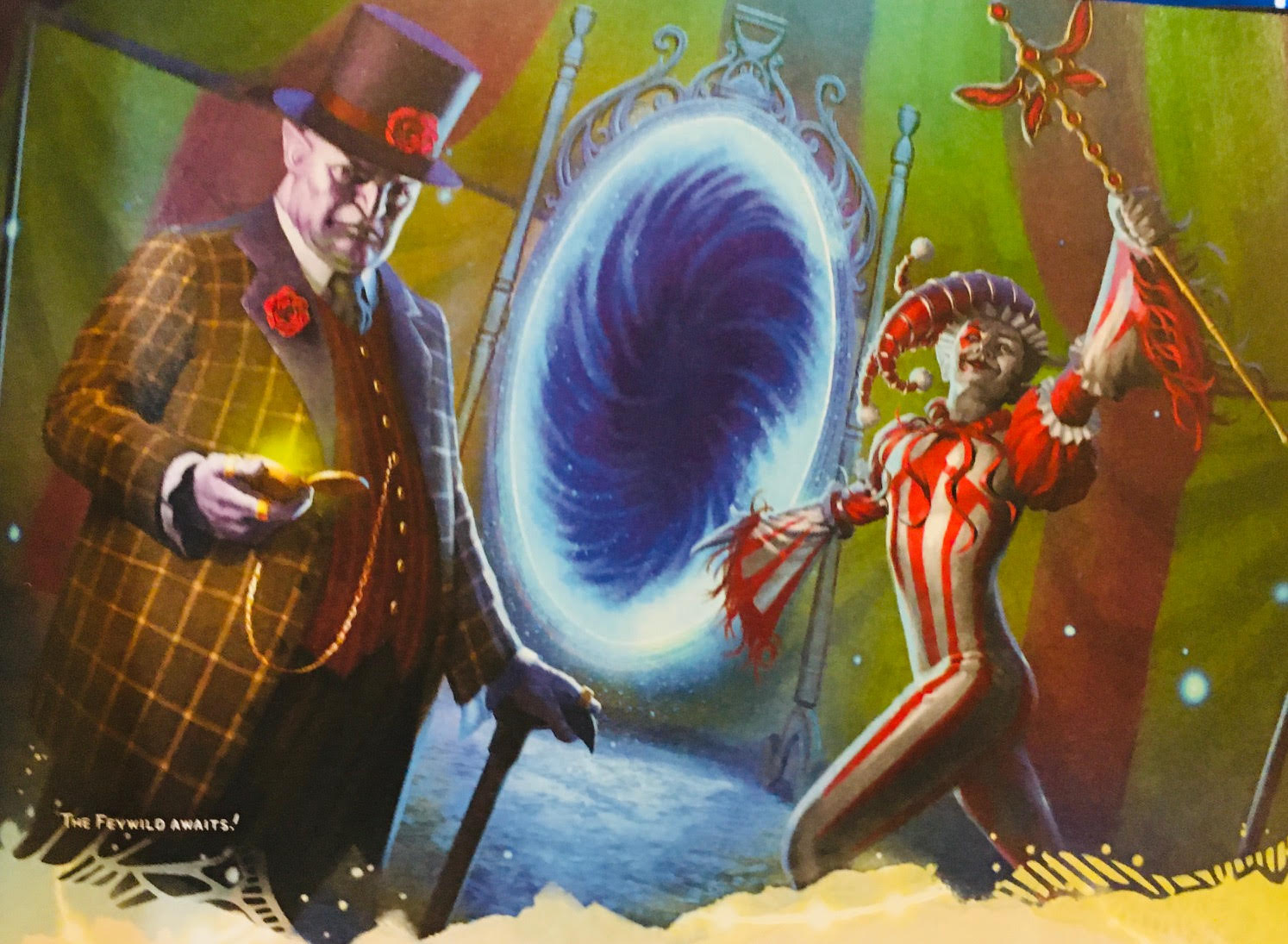
Alternatives to Conflict
Much has been made about the fact that TWBtW has been designed so that all of the campaign’s challenges can be resolved without any combat. Similarly, the Feywild rules of ownership could be a challenge if your players are used to plundering everything in sight.
It’s a different approach to an official adventure, which is very nice. If your players love combat, it’s perfect acceptable, but in TWBtW it’s not quite the same as the typical combat-heavy adventure. The rules of the Feywild are still important and sometimes not fighting is the best answer—especially when dealing with powerful fey.
Consequences are also very important in TWBtW. NPCs may be encountered more than once so poor treatment or tricks could come back to haunt the players. A small kindness, in turn, could lead to aid when needed later.
The NPCs run the gamut of good and evil—remember this is dark whimsy, not sweetness and light fantasy—but so many of them are charming it keeps the adventure fun even when dealing with something serious.
And whether you’re focusing on art or the characters, so many of the NPCs are so cute you could take adorableness damage. The faerie dragon knight Sir Tavalar is a reliable ally, and he has the most charming little mustache. The Campestri’s high-pitched, nasal singing can quickly becomes annoying but they’re so cheery—unless attacking you in a swarm, which can be quite effective. Little Oak the treant, Star the displacer beast kitten, the Getaway Gang—I enjoyed so many of the NPCs in TWBtW.
Three of my favorite NPCs are part of the many Easter eggs. Moving between Hither, Thither, and Yon requires a guide. During TWBtW you’ll find three NPCs inspired by the Wizard of Oz—Clapperclaw the (child-sized) Scarecrow, Squirt the Oilcan, and Amidor the Dandelion (get it—lion?) with their tiny rapier and seed sling.
TWBtW contains many Easter eggs with the most notable ones tying into the old D&D cartoon series. The Witchlight Carnival has a ride featuring red mine carts run by a dwarven mage with a familiar appearance. Not surprisingly the ride goes through an opening that looks like a dragon’s mouth. On the less playful end of the spectrum, in Prismeer, the characters can run into Warduke.
To free Zybilna and Prismeer, the characters have to make it to the Palace of Heart’s Desire. Over the course of their adventures they should have also discovered at least one of three ways to break the spell that holds Zybilna frozen in time. Which option they choose, and how they respond to her questions once freed will affect the true end of the adventure.
While this part of the review is a spoiler, the next bit is a big spoiler—huge so we’re going to add a spoiler tag to protect it just in case.
Because of Zybilna/Iggwilv’s power, the actual ending of TWBtW has some interesting options. If she’s pleased by the characters—and freeing her isn’t necessarily enough to guarantee that—she could grant them one wish, as per the spell. Or, if the Lost Things adventure hook was used, Zybilna/Iggwilv might make them a very special offer—sending them back to their childhood with everything lost restored, allowing them to live their life over, more whole. This option essentially retires the characters.
While in the broad strokes, TWBtW is a simple adventure—visit the carnival, go the Feywild, free its ruler—it has a lot of meat to it and complex NPCs. For example, the hag Endelyn can see the future so she knows how their plot will end and even how she dies. Played correctly, that makes her as tragic as she is evil.
If you don’t like to run adventures as-is, TWBtW still gives you a lot to work with. Drop the carnival into any adventure as a one-shot. Borrow the Hourglass Coven for other dastardly deeds. Use Hither, Thither, and Yon individually as Feywild settings. The variety of the kingdoms and their denizens (Endelyn’s fascination with clockwork mechanisms gives Yon an almost steampunk feel).
WotC has made changes over the past couple of years to how alignments are handled. TWBtW has an approach that works and I hope continues. Creatures have alignments with the word “typically” attached to reflect the fact the alignment may be common but not a monolith. Technically, the Monster Manual always had that in its notes along with instructions that the DM could change them as they see fit, but that seems to have been missed. Humanoids, however, have choice, so in some cases they’re designated as “any alignment” and in others they get the “typically” label. Named NPCs have alignments to reflect their actions and personality.
Some of the magic items in the appendix have been around for awhile. TWBtW especially includes several common magic items featured in Xanathar’s Guide to Everything, though with art this time. It has some significant new magic items, too, like the changeable cauldron that is vital to freeing Zybilna.
Snicker-Snack, the intelligent, legendary sword is especially interesting. It likes fighting evil. If its attuned wielder falls three attacks in a row, Snicker-Snack refuses to work with them, and the wielder must win its cooperation all over again. Hexblade patrons are often neglected in terms of how to roleplay the relationship in comparison to more lively patrons. Snicker-Snack could easily be used as a model for a Hexblade patrons.
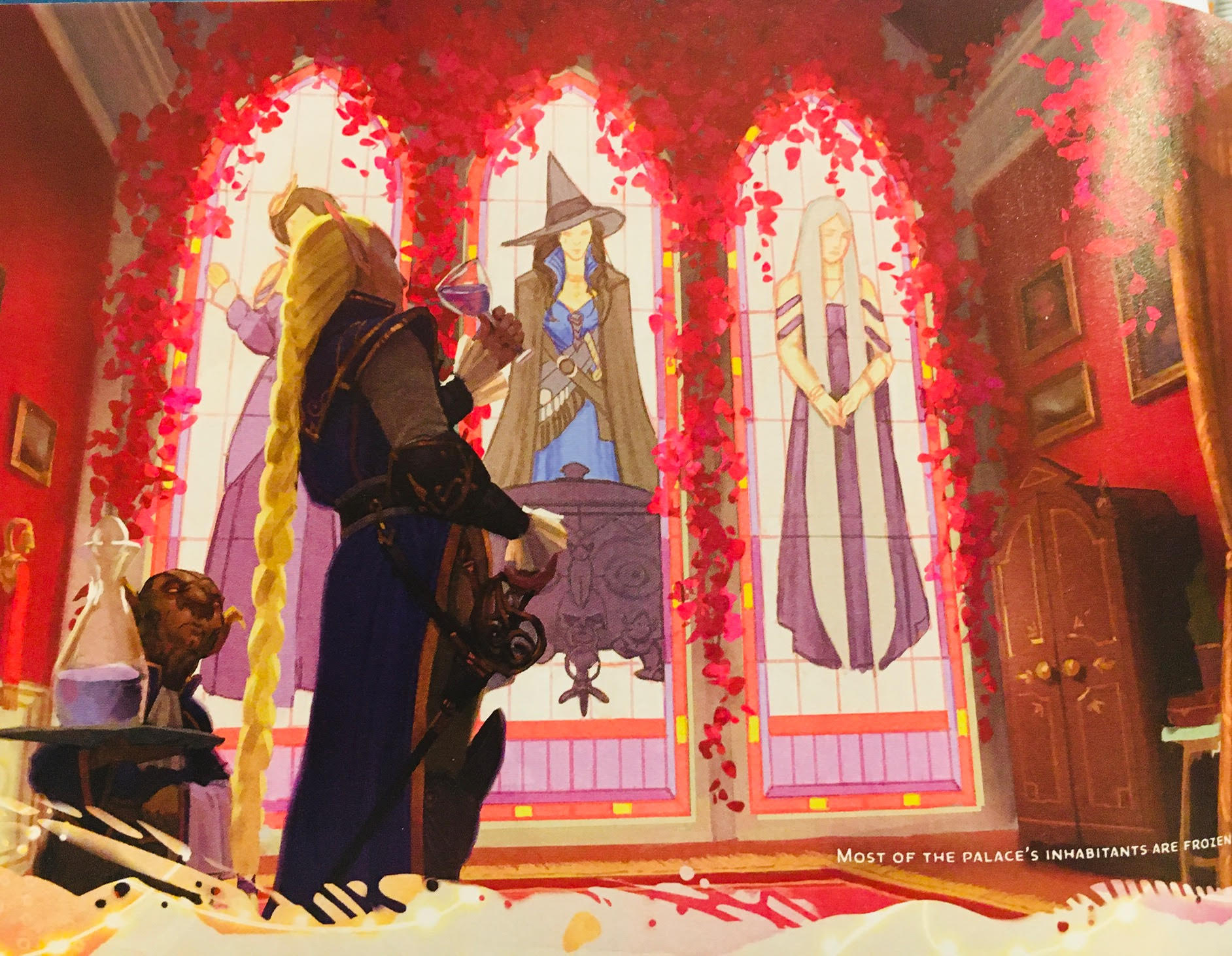
Weighing How Well Witchlight Works
I like TWBtW for several reasons. First, I like new settings and while the Feywild has been around for several editions it’s rather amazing that this is its first, official full-length adventure.
Second, while combat is fun, the challenge of trying to charm, cajole, bargain, and intimidate your way through Prismeer without resorting to combat looks to be entertaining. Third, as said above, I love some of these NPCs. Fourth, I can definitely raid TWBtW for adventure components and characters or run it as is—a versatility I enjoy.
TWBtW could be a good choice for you if:
- You enjoy the Feywild, fairy tales, etc.
- You and your group enjoy role-playing, negotiation, word play, etc.
- You’re a new DM and want an adventure without complex battle mechanics
What if you and your group love the setting but also love hack-and-slay combat? TWBtW could still be a winner. Just realize that some fey might be too strong for the group so wiles might work better than weapons in some circumstances—or just accept that it could lead to a TPK.
I really like that WotC is giving us variety in adventures and settings, and in the case of TWBtW, variety in how to resolve the adventure. My only real complaint is that in the initial interviews about TWBtW, comments were made that it could be used to create other Domains of Delight. Prismeer could act as a guide but no real guidance is provided for that. I’m hoping it does well enough to lead to a Feywild equivalent of Van Richten’s Guide to Ravenloft—especially if they use fairy tales from all around the world for inspiration.
After several adventures that had intriguing ideas and compelling settings that I appreciated objectively but had no interest in running for my group, The Wild Beyond the Witchlight breaks that trend. Its fantastical setting and cute creatures are just the remedy many people might like after the difficulties of the past two years and the heavier adventures that preceded it. If dark whimsy appeals to you, this book delivers.


